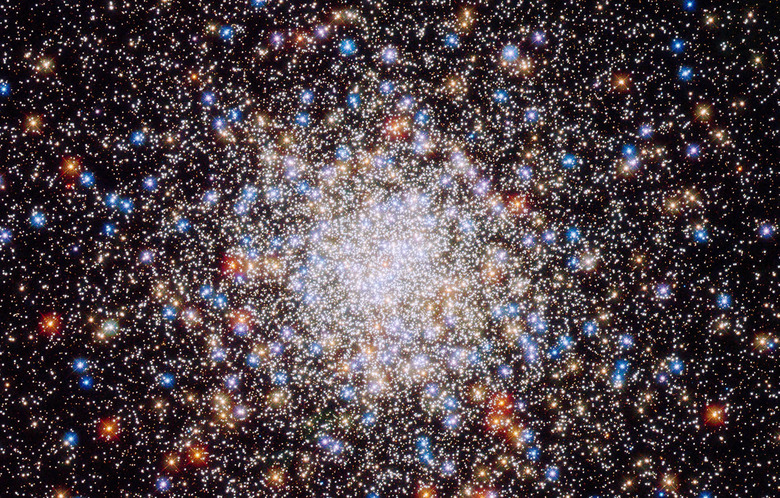Scientists Just Spotted Nearly 50 Totally New Galaxies
You live on Earth. Earth is part of a planet-moon system that is part of the larger solar system. The solar system revolves around a single star in the Milky Way galaxy. The Milky Way galaxy is home to at least 100 billion stars and perhaps as many as 400 billion... and it's just one galaxy. Now, in a new research paper, a team of astronomers has announced the discovery of 44 entirely new galaxies, each containing an untold number of stars, planets, moons, and you. Wait, not you, but everything else before that.
The researchers used data from a variety of sources to hunt for previously undetected galaxies hiding in a region of space called the Fornax Cluster. The Fornax Cluster is a, well, cluster of galaxies that sit some 65 million light-years from Earth and has been a huge source of galaxy discoveries in the past. In this case, data from multiple surveys and observational campaigns was used to reveal the presence of 44 new galaxies, but they aren't anything like the Milky Way.
There are many different types of galaxies in the universe. Spiral galaxies like our own are just one type, and each galaxy variant can come in a variety of sizes. These new galaxies are what are known as UCDs, or ultra-compact dwarf galaxies. As their name suggests, these galaxies are extremely compact and are only around 200 light-years across. By comparison, the Milky Way is thought to be roughly 100,000 light-years in diameter, give or take a few lifetimes.
Because they're smaller in size they also contain fewer stars. It's estimated that UCDs contain approximately 100 million stars, though, again, that's just a very rough estimate. These "tiny" galaxies are a relatively recent discovery for scientists, with the first UCDs being classified less than two decades ago. They're also quite a bit harder to spot than their larger, more impressive counterparts, and that's why they may have been hiding in data that was already studied.
After scouring the information available, the research team had a whopping 220 potential UCD candidates. That's a lot, so the scientists decided to focus their efforts on the objects most likely to be UCDs. They ended up with 44 that are likely new galaxies that had yet to be documented, and they're located near the fringe of the larger cluster. The researchers say the new galaxies are over 1,170 light-years from the core of the cluster, which also may have made them more difficult to spot in previous research efforts.
"With the deep optical images of the Fornax Deep Survey, combined with public near-infrared data, we revisit the UCD population of the Fornax cluster and search for UCD candidates, for the first time, systematically, out to the virial radius of the galaxy cluster," the researchers explain.
At a distance of roughly 65 million light-years from Earth, just the fact that we can know these galaxies exist is impressive. Unfortunately, it'll be quite some time before we have the technology to learn much more about them or what they contain.
